Bloomberg Bundle
Who Really Calls the Shots at Bloomberg?
The financial world thrives on data, but who controls the flow of information? Uncover the ownership secrets of Bloomberg L.P., a titan in the financial data and media landscape. This privately held company, founded in 1981, holds significant influence, making its ownership structure a critical piece of the puzzle for anyone navigating the markets.
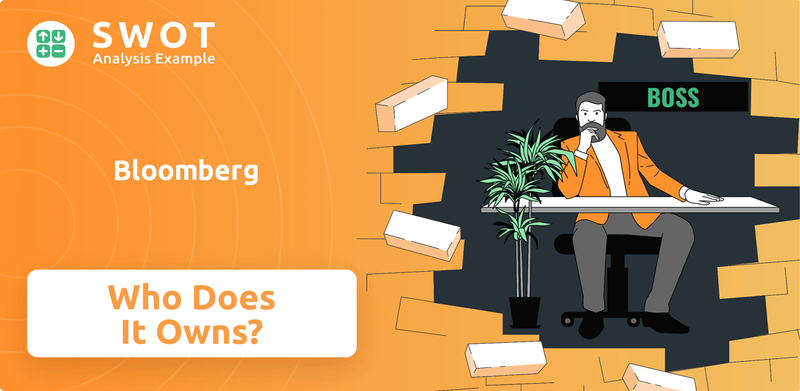
Understanding Bloomberg SWOT Analysis is essential, but knowing who owns the Bloomberg company is paramount. From its inception by Michael Bloomberg, the company's ownership has shaped its trajectory, influencing everything from its strategic decisions to its market dominance. Exploring the Bloomberg ownership structure provides crucial insights into its governance and long-term vision, especially considering its vast influence through Bloomberg News and the Bloomberg Terminal.
Who Founded Bloomberg?
The genesis of Bloomberg L.P., a prominent player in financial data and media, began in 1981. The company was co-founded by Michael Bloomberg, alongside Thomas Secunda, Duncan MacMillan, and Charles Zegar. This ambitious venture was initially known as Innovative Market Systems (IMS).
Michael Bloomberg spearheaded the initiative, leveraging a $10 million severance package from Salomon Brothers. The core objective was to establish a system providing real-time market data and analytics to the financial industry. This innovative approach laid the groundwork for what would become a global financial information powerhouse.
Early backing from Merrill Lynch in 1984 was crucial. The investment of $30 million secured a 30% equity stake for Merrill Lynch. This partnership was pivotal for the company's early growth. This significant investment helped fuel the company's expansion and technological advancements.
The initial equity distribution among the co-founders hasn't been publicly detailed, but Michael Bloomberg retained the majority ownership. The company was officially renamed Bloomberg L.P. in 1986. As of 2025, Thomas Secunda holds approximately 4% of the company, and Duncan MacMillan and Charles Zegar each hold about 1%.
- Michael Bloomberg's ownership remains the largest.
- Merrill Lynch's early investment was a key financial boost.
- Brief History of Bloomberg provides further insight into the company's evolution.
- The Bloomberg Terminal is central to the company's business model, providing data and analytics.
Bloomberg SWOT Analysis
- Complete SWOT Breakdown
- Fully Customizable
- Editable in Excel & Word
- Professional Formatting
- Investor-Ready Format
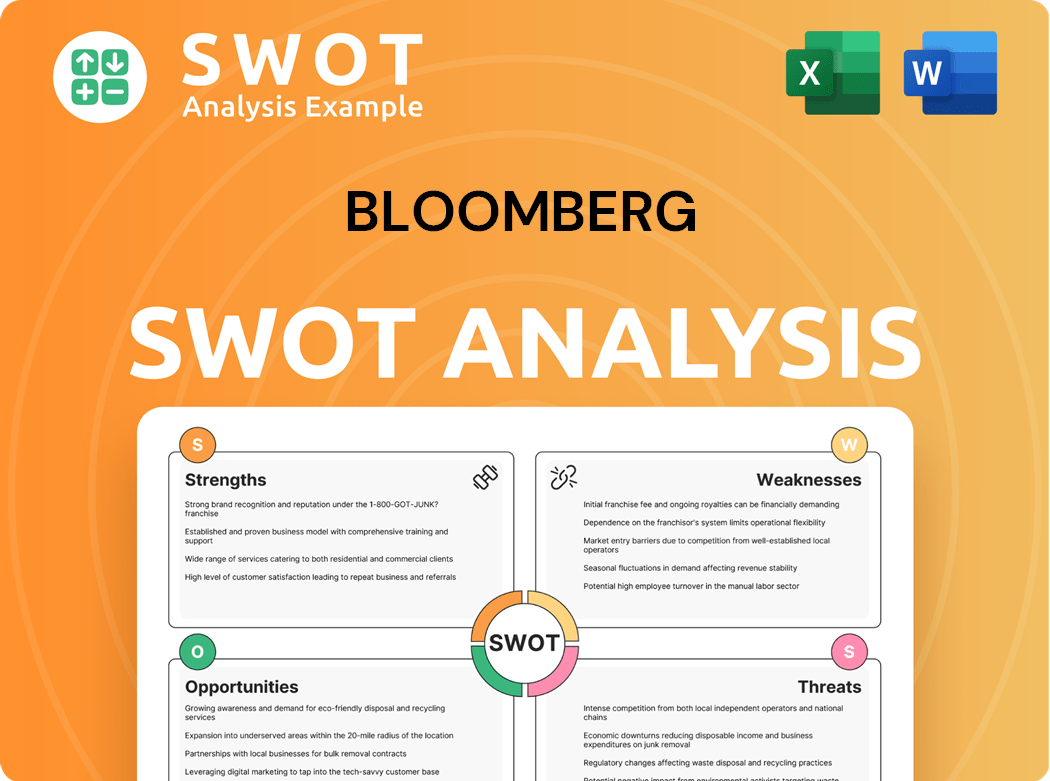
How Has Bloomberg’s Ownership Changed Over Time?
The evolution of Bloomberg ownership has been marked by significant changes, primarily driven by Michael Bloomberg's efforts to consolidate control. Initially, Merrill Lynch held a 30% stake in the Bloomberg company. In late 1996, Bloomberg L.P. repurchased a portion of Merrill Lynch's stake, valuing the company at $2 billion at the time. This was a pivotal moment, setting the stage for future ownership adjustments.
The most impactful shift occurred in 2008 during the financial crisis. Merrill Lynch agreed to sell its remaining 20% stake back to Bloomberg Inc., a entity largely owned by Michael Bloomberg, for approximately $4.43 billion. This transaction valued Bloomberg L.P. at around $22.5 billion, significantly increasing Michael Bloomberg's ownership. These transactions highlight the strategic moves made to shape the company's ownership structure.
| Event | Date | Impact |
|---|---|---|
| Merrill Lynch Stake | Late 1996 | Bloomberg L.P. repurchased a portion of Merrill Lynch's 30% stake, valuing the company at $2 billion. |
| Merrill Lynch Sale | 2008 | Merrill Lynch sold its remaining 20% stake to Bloomberg Inc. for $4.43 billion, valuing Bloomberg L.P. at $22.5 billion. |
| Current Ownership | 2025 | Michael Bloomberg holds approximately 88% of Bloomberg L.P. |
As of 2025, Michael Bloomberg is the majority owner, holding about 88% of Bloomberg L.P. The remaining shares are held by a small group of executives and limited partners. This private ownership structure allows Bloomberg L.P. to operate without the scrutiny of public markets. The company's valuation is estimated between $60 and $70 billion as of 2025. For more insights into the company's operations, consider reading about the Revenue Streams & Business Model of Bloomberg.
Michael Bloomberg's control is central to Bloomberg ownership.
- Merrill Lynch's stake was a significant early influence.
- The 2008 transaction was a pivotal moment in consolidating ownership.
- Bloomberg News operates under a privately held structure.
- The company's valuation reflects its strong market position.
Bloomberg PESTLE Analysis
- Covers All 6 PESTLE Categories
- No Research Needed – Save Hours of Work
- Built by Experts, Trusted by Consultants
- Instant Download, Ready to Use
- 100% Editable, Fully Customizable
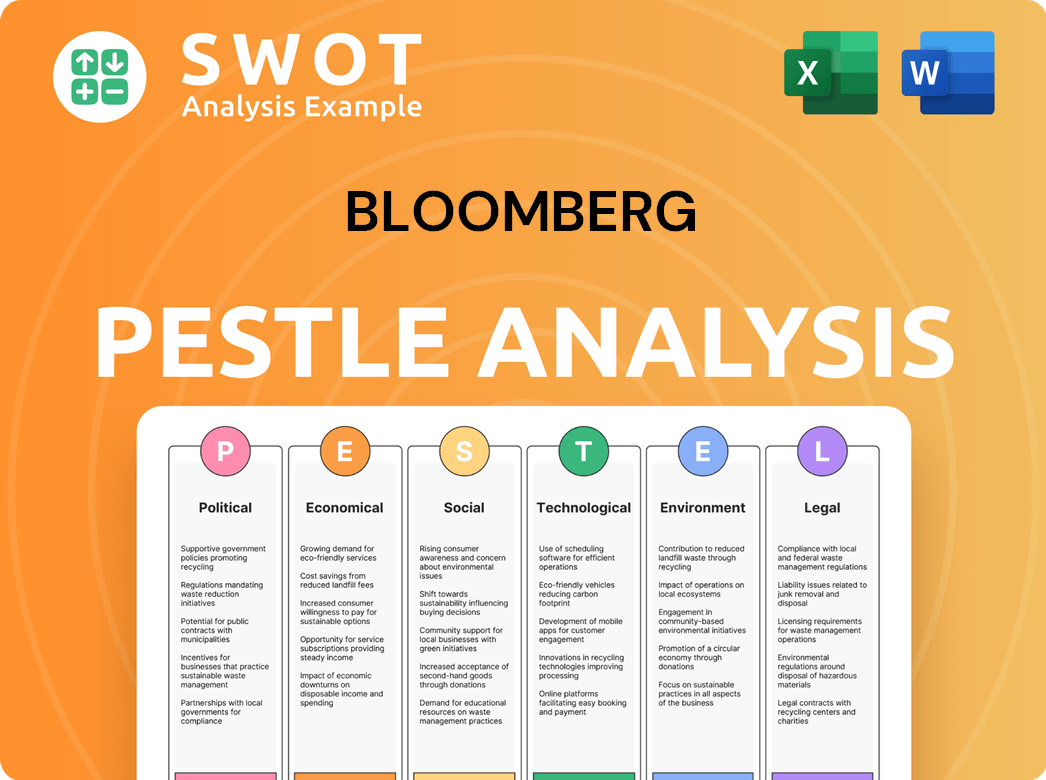
Who Sits on Bloomberg’s Board?
As a privately held entity, the structure of the board of directors at Bloomberg L.P. differs from that of publicly traded companies. The management committee is responsible for overseeing the company's strategic direction and operational activities. Key figures on this committee include Michael Bloomberg, Peter Grauer, and Thomas Secunda. In August 2023, Michael Bloomberg appointed Vlad Kliatchko as CEO of Bloomberg L.P. and Mark Carney, former Bank of England governor, as the non-executive chair of a new board of directors.
Michael Bloomberg, who served as CEO from 1981 to 2001 and again from 2014 to 2023, holds a significant ownership stake. As of 2025, Michael Bloomberg's ownership is approximately 88%, giving him substantial control over the company's strategies and operations. This level of ownership translates into considerable voting power, making traditional shareholder actions less relevant for Bloomberg L.P. The governance structure includes a Benchmark Oversight Committee (BOC) for Bloomberg Index Services Limited (BISL), which operates independently of the Product Oversight Committee (POC). This setup ensures internal oversight, even without external shareholder pressure. Bloomberg emphasizes its independence, with its editorial division operating separately from its financial products division to avoid conflicts of interest, which helps maintain trust in its reporting and services. If you want to know more about the company's marketing approach, you can read about the Marketing Strategy of Bloomberg.
| Key Personnel | Role | Notes |
|---|---|---|
| Michael Bloomberg | Former CEO, Significant Owner | Approximately 88% ownership as of 2025. |
| Vlad Kliatchko | CEO | Appointed August 2023. |
| Mark Carney | Non-Executive Chair | Former Bank of England governor. |
The governance of the Bloomberg company is primarily shaped by its private ownership structure, with Michael Bloomberg holding the majority stake. This gives him substantial control over strategic decisions. The presence of an independent Benchmark Oversight Committee (BOC) within the BISL division indicates internal oversight mechanisms.
- Bloomberg ownership is concentrated.
- The board structure differs from public companies.
- Independence is maintained between editorial and financial divisions.
- Who owns Bloomberg has a big impact on the company's direction.
Bloomberg Business Model Canvas
- Complete 9-Block Business Model Canvas
- Effortlessly Communicate Your Business Strategy
- Investor-Ready BMC Format
- 100% Editable and Customizable
- Clear and Structured Layout
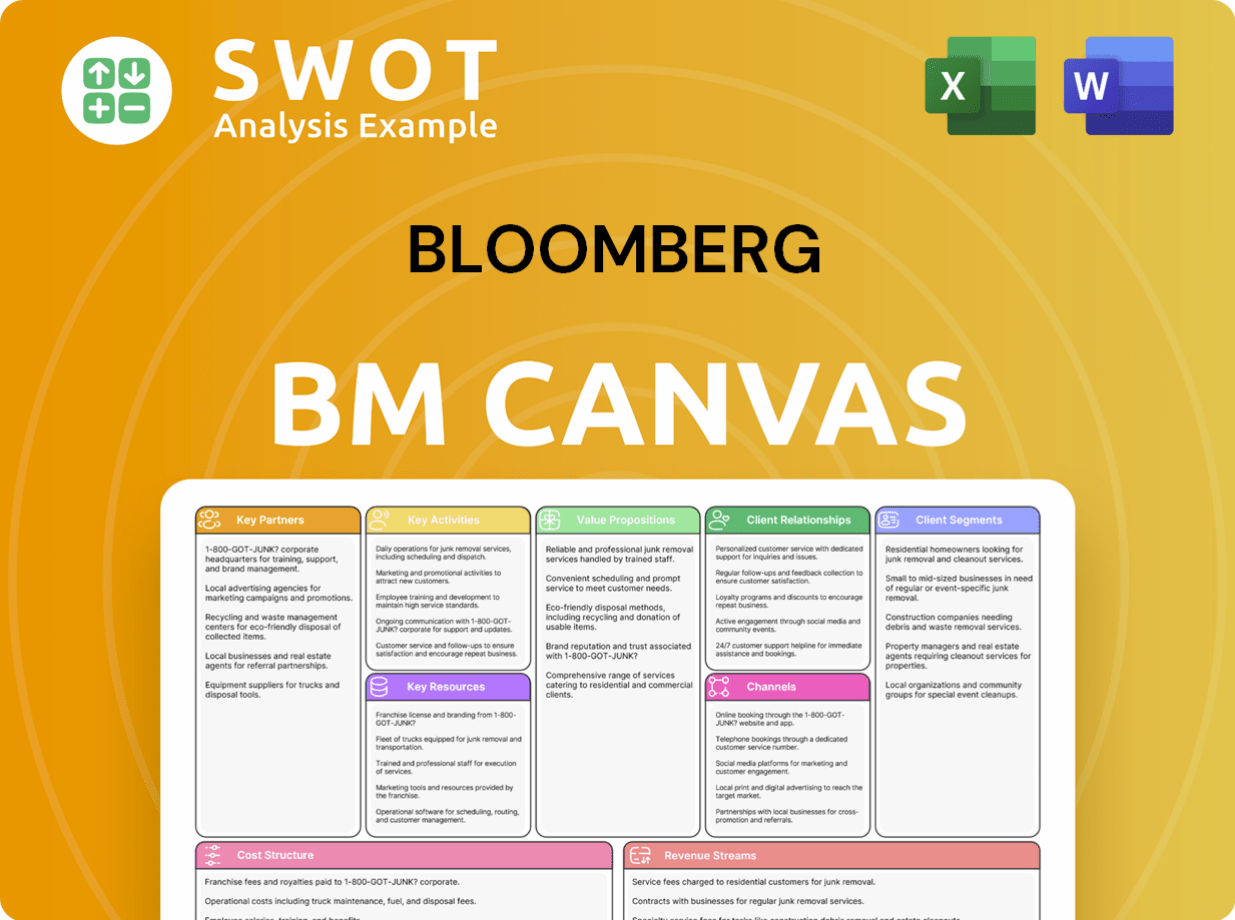
What Recent Changes Have Shaped Bloomberg’s Ownership Landscape?
In recent years, the ownership of the Bloomberg company has remained largely consistent. The founder, Michael Bloomberg, still holds a significant stake. As of 2025, Michael Bloomberg retains approximately 88% ownership of Bloomberg L.P. This structure provides a unique perspective on long-term strategic goals.
A key development in the past few years is Michael Bloomberg's plan to donate his entire stake to Bloomberg Philanthropies. This transfer of ownership, planned for either his death or sooner, underscores a commitment to philanthropy. In 2024, Bloomberg Philanthropies invested $3.7 billion globally. This ensures that the company's profits will support charitable causes, setting a distinct ownership trend for a major private entity.
| Aspect | Details | Impact |
|---|---|---|
| Ownership Structure | Primarily held by Michael Bloomberg. | Prioritizes long-term strategies over short-term financial results. |
| Future Ownership | Planned donation to Bloomberg Philanthropies. | Ensures profits support charitable causes. |
| Leadership | Vlad Kliatchko as CEO (August 2023), Mark Carney as non-executive chair. | Focus on technology innovation and data product expansion. |
The sustained private ownership model of Bloomberg L.P. allows it to prioritize long-term strategic goals. This is a distinct advantage in a rapidly evolving market. Bloomberg reported estimated revenues north of $13 billion in 2023, demonstrating its financial strength and market position. For further insights into the competitive landscape, you can explore the Competitors Landscape of Bloomberg.
Michael Bloomberg's significant ownership stake provides stability. This structure allows the company to focus on long-term strategies. This is unlike public companies, where ownership can be more fragmented.
The plan to transfer ownership to Bloomberg Philanthropies is a major trend. This ensures that the company's success benefits charitable causes. This model is unique for a major financial information provider.
Recent leadership changes aim to drive innovation and expansion. Vlad Kliatchko's appointment as CEO reflects a focus on technology. Mark Carney's role as non-executive chair supports strategic growth.
Bloomberg continues to expand its physical presence, such as the recent lease renewal. The company's strong revenue figures demonstrate its leading position. The private ownership model supports sustained growth.
Bloomberg Porter's Five Forces Analysis
- Covers All 5 Competitive Forces in Detail
- Structured for Consultants, Students, and Founders
- 100% Editable in Microsoft Word & Excel
- Instant Digital Download – Use Immediately
- Compatible with Mac & PC – Fully Unlocked
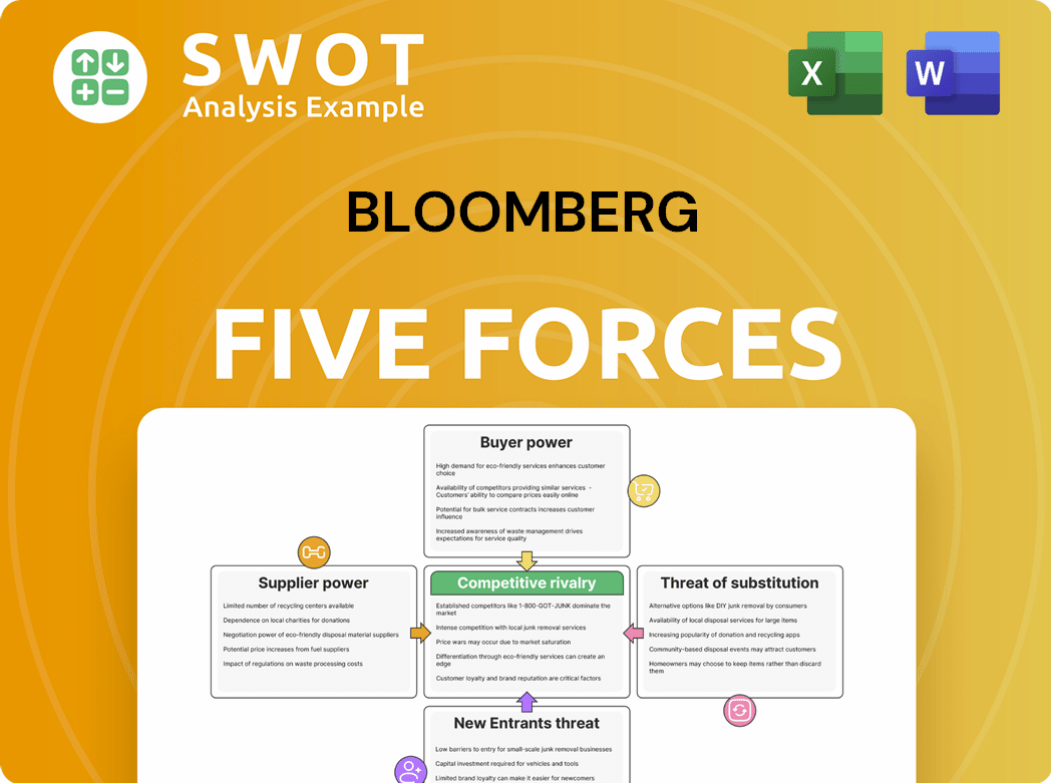
Related Blogs
- What are Mission Vision & Core Values of Bloomberg Company?
- What is Competitive Landscape of Bloomberg Company?
- What is Growth Strategy and Future Prospects of Bloomberg Company?
- How Does Bloomberg Company Work?
- What is Sales and Marketing Strategy of Bloomberg Company?
- What is Brief History of Bloomberg Company?
- What is Customer Demographics and Target Market of Bloomberg Company?
Disclaimer
All information, articles, and product details provided on this website are for general informational and educational purposes only. We do not claim any ownership over, nor do we intend to infringe upon, any trademarks, copyrights, logos, brand names, or other intellectual property mentioned or depicted on this site. Such intellectual property remains the property of its respective owners, and any references here are made solely for identification or informational purposes, without implying any affiliation, endorsement, or partnership.
We make no representations or warranties, express or implied, regarding the accuracy, completeness, or suitability of any content or products presented. Nothing on this website should be construed as legal, tax, investment, financial, medical, or other professional advice. In addition, no part of this site—including articles or product references—constitutes a solicitation, recommendation, endorsement, advertisement, or offer to buy or sell any securities, franchises, or other financial instruments, particularly in jurisdictions where such activity would be unlawful.
All content is of a general nature and may not address the specific circumstances of any individual or entity. It is not a substitute for professional advice or services. Any actions you take based on the information provided here are strictly at your own risk. You accept full responsibility for any decisions or outcomes arising from your use of this website and agree to release us from any liability in connection with your use of, or reliance upon, the content or products found herein.